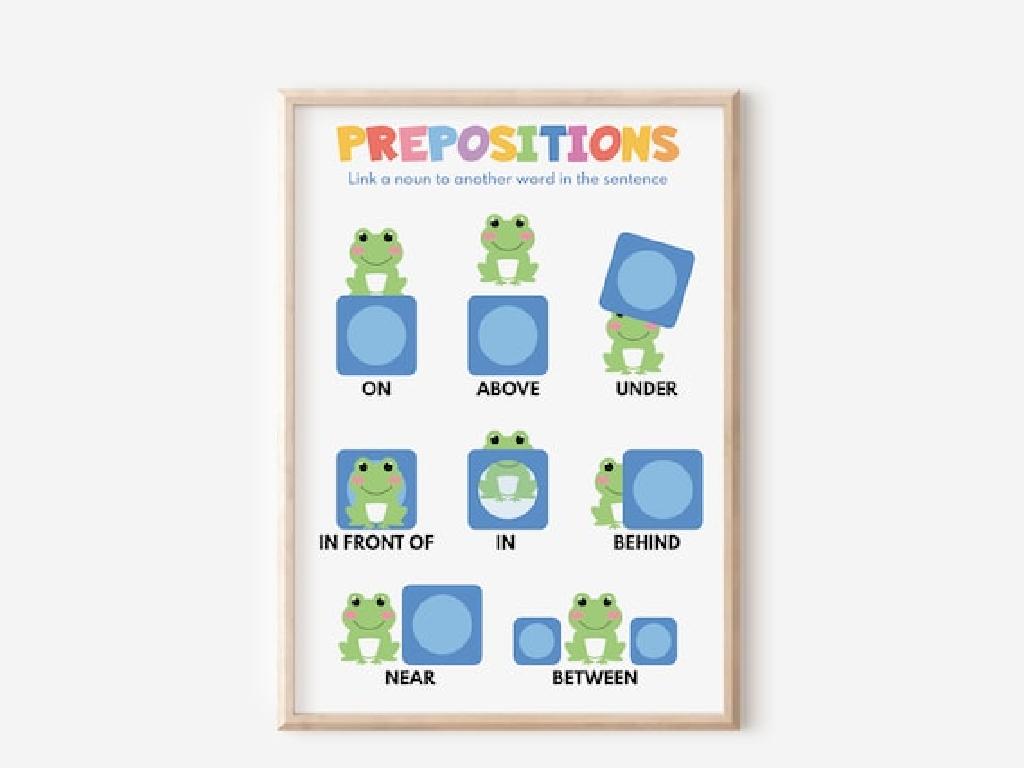Name Countries Of Asia: Region 4
Subject: Social studies
Grade: Sixth grade
Topic: Asia: Geography
Please LOG IN to download the presentation. Access is available to registered users only.
View More Content
Exploring Asia: Region 4 Countries
– Asia: Earth’s largest continent
– Region 4: A diverse area
– Encompasses a variety of climates and cultures
– Today’s goal: Name Region 4 countries
– We’ll learn the names and locations of these countries
– Understanding regional geography
– Grasp the physical and political features of Region 4
|
This slide introduces students to the vast and diverse continent of Asia, with a special focus on Region 4. Begin by highlighting Asia’s size and the diversity that comes with being the largest continent. Explain that Region 4 includes countries with various climates, cultures, and histories. Today’s objective is to familiarize students with the names and locations of the countries within this region. Emphasize the importance of understanding both the physical geography, such as mountains and rivers, and the political geography, like country borders and capitals. Encourage students to think about how geography can influence culture and daily life in these countries.
Exploring Asia: Region 4 Geography
– Asia’s diverse physical features
– Mountains like the Himalayas, vast rivers like the Yangtze, and large deserts such as the Gobi
– Climate patterns and resources
– Monsoons influence climate; rich in natural resources like oil and minerals
– Cultural and political landscapes
– A tapestry of cultures, languages, and governments
– Examining Region 4 countries
– Focus on countries like Vietnam, Laos, and Cambodia
|
This slide introduces students to the complex geography of Asia’s Region 4, emphasizing its physical features, climate, and cultural-political divisions. Highlight the significance of major geographical landmarks like the Himalayas and the Gobi Desert. Discuss how the monsoon climate affects agriculture and daily life, and mention the abundance of natural resources. Explain the cultural diversity, with numerous languages and traditions, and the varied political systems. Focus on Region 4 countries, encouraging students to explore Vietnam, Laos, and Cambodia, and understand their unique place within Asia’s geography. Provide maps and encourage students to locate these features and countries for a better geographical understanding.
Exploring Asia: Region 4 Countries
– Locate Region 4 on the map
– Use a map to find Asia’s Region 4
– Enumerate countries in Region 4
– List includes countries like Thailand, Vietnam, etc.
– Discuss unique characteristics
– Explore cultural, geographical uniqueness
– Understand Region 4’s diversity
– Recognize the varied cultures and landscapes
|
This slide aims to introduce students to Region 4 of Asia, helping them to visually locate it on a map and familiarize themselves with the countries that are part of this region. The list of countries should include, but not be limited to, Thailand, Vietnam, Malaysia, and Singapore. Discuss the unique characteristics of the region, such as cultural diversity, languages, and geographical features like the Mekong River and the tropical climate. Emphasize the importance of understanding the diversity within Asian regions to appreciate the continent’s rich tapestry of cultures and environments. Encourage students to think about how the geography of a place can influence the culture and daily life of its inhabitants.
Exploring Asia: Region 4 Countries
– Capitals and population overview
– Learn about the capital cities and their population sizes.
– Languages and cultural traditions
– Discover the diverse languages spoken and unique cultural traditions.
– Main industries and agriculture
– Explore predominant industries and agricultural practices.
– Economic impact on the region
– Understand how these factors contribute to the region’s economy.
|
This slide aims to provide students with a comprehensive understanding of the countries in Asia’s Region 4. Begin by discussing the capital cities and their populations to give students a sense of scale and governance. Move on to the rich cultural aspects, highlighting the variety of languages and traditions that make each country unique. Discuss the primary industries and agricultural activities that drive the economies of these countries. Finally, tie these elements together to show students how culture, industry, and agriculture shape the economic landscape of the region. Encourage students to think about how these factors are interconnected and the importance of each in the context of the country’s overall development.
Exploring Asia’s Region 4: Physical Geography
– Mountains, rivers, and plains
– Explore the Himalayas, the Mekong River, and the vast Gobi Desert.
– Climate zones’ impact on life
– How do monsoons and arid zones affect the people and wildlife?
– Region 4’s natural resources
– Discover resources like oil in the Middle East and fertile land in the Indus Valley.
– Environmental concerns
– Discuss pollution in the Yangtze River and deforestation issues.
|
This slide aims to give students a comprehensive understanding of the physical geography of Asia’s Region 4. Highlight the diverse landscapes, from the towering Himalayas to the life-giving rivers like the Mekong, and expansive plains such as the Gobi Desert. Discuss the variety of climate zones, from the monsoon-affected areas to the arid deserts, and how these climates influence the daily lives of the region’s inhabitants and the local fauna. Introduce the wealth of natural resources, including the oil-rich Middle East and the agriculturally productive Indus Valley. Finally, address the pressing environmental concerns, such as the pollution affecting major rivers and the deforestation impacting biodiversity. Encourage students to think about how geography shapes the culture and economy of a region.
Interactive Map Quiz: Exploring Asia’s Region 4
– Locate Region 4 countries on a map
– Find the capital cities in a quiz
– Capitals like Bangkok, Hanoi, and Kuala Lumpur
– Discuss travel dreams to these countries
– Think about culture, landmarks, cuisine
– Share and learn from classmates
|
This interactive map quiz is designed to help students familiarize themselves with the countries of Asia’s Region 4 and their capital cities. Start by having students locate each country on a map. Then, proceed with a fun quiz to identify the capitals, providing hints and encouragement along the way. After the quiz, facilitate a discussion where students share which country they would like to visit and why, encouraging them to consider aspects such as culture, landmarks, and food. This activity will not only reinforce their geographical knowledge but also stimulate their curiosity about different cultures. Provide a supportive environment where every student feels comfortable sharing their thoughts.
Class Activity: Design a Travel Brochure
– Select a Region 4 country
– Research: Capital, Language, Attractions
– Find interesting facts about the country’s culture, history, and geography
– Design your brochure
– Use images, facts, and creative descriptions
– Highlight country’s best features
– Focus on what makes the country unique and appealing to tourists
|
This activity encourages students to explore the diversity of Asia’s Region 4 by researching and creating a travel brochure for a selected country. Students should look up the capital city, official language, and popular tourist attractions. They should also consider including information on the country’s culture, traditional foods, and any unique festivals or events. The brochure should be visually appealing and informative, aiming to entice classmates to visit the country. Provide students with brochure templates, access to research materials, and examples of travel brochures for guidance. Possible countries for selection include Thailand, Vietnam, Malaysia, or Singapore. This activity will help students develop research skills and understand the cultural and geographical variety within Asia.
Conclusion: Exploring Asia’s Region 4
– Recap of Asian countries in Region 4
– Present our travel brochures
– Share the brochures we created, highlighting unique aspects of each country
– Reflect on our learning
– What new facts did we discover about this region?
– Discuss the diversity of Region 4
– Talk about the different cultures, climates, and landscapes we learned about
|
This slide aims to wrap up the lesson on Asia’s Region 4 by revisiting the countries covered and the key points learned. Students will present the travel brochures they’ve created, which should include information on the geography, culture, and notable features of the countries they researched. Encourage students to reflect on what they found most interesting or surprising about Asia’s Region 4. Facilitate a discussion on the region’s diversity, touching on how the climate, culture, and landscapes vary from country to country. This reflection will help solidify their understanding and appreciation of the region’s complexity and uniqueness.






